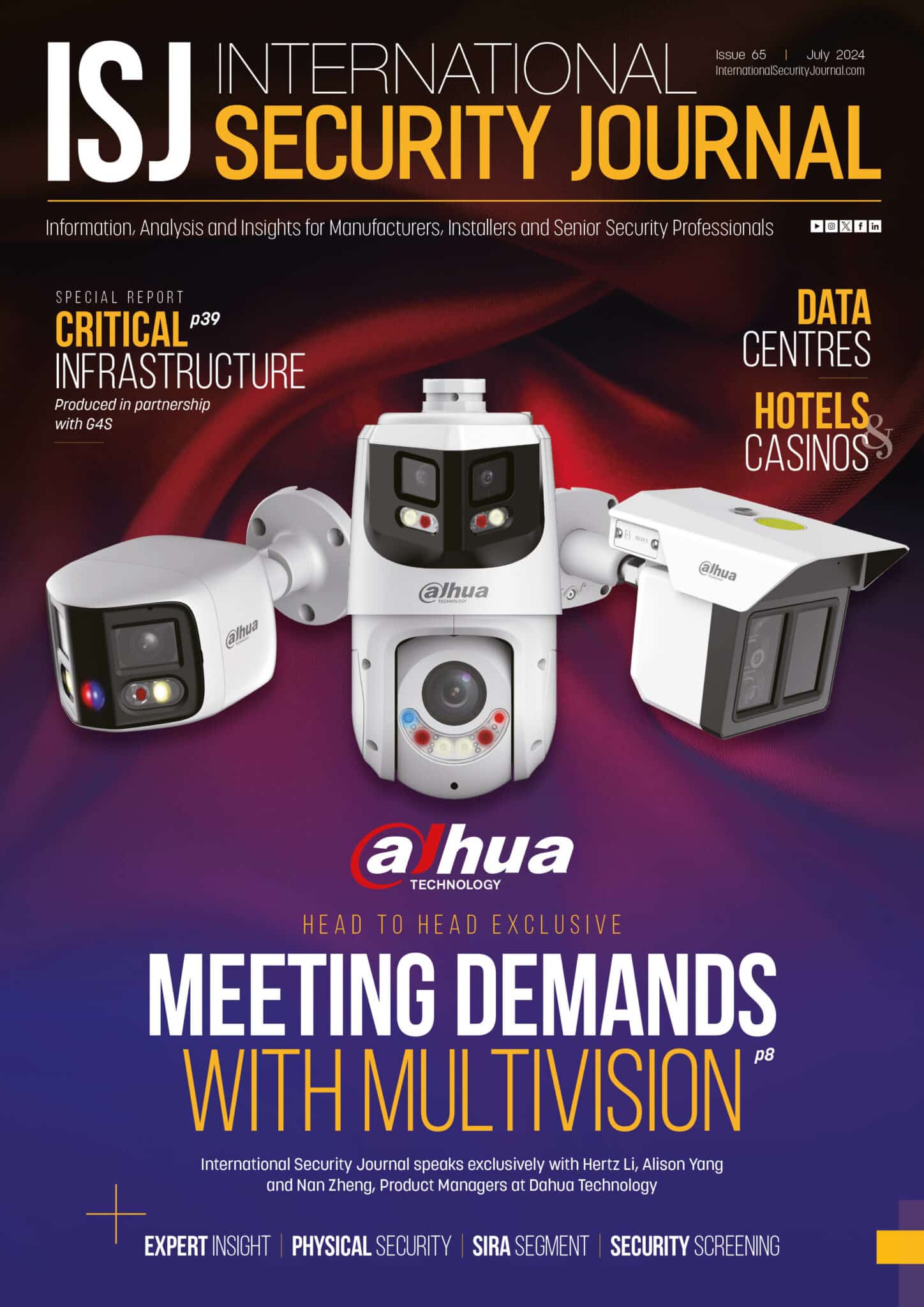How surveillance supports counter terror compliance


James Thorpe
Share this content
In this ISJ exclusive article, Martin Bonfield, Synectics takes a look at how security and surveillance solutions can assist in compliance with the new Terrorism Bill.
Across the UK, the threat picture is complex and ever-evolving.
Critical events can occur at any time, in any location – those with high foot traffic being of particular concern.
In fact, this July, the Home Office reported 39 foiled terror plots in Britain over the past six years.
The UK government recently committed to stepping up its counter terror efforts with the introduction of the Terrorism (Protection of Premises) Bill in May 2023.
Whilst still currently in draft, the bill – also referred to as ‘Protect Duty’ and ‘Martyn’s Law’ – is a first-of-its-kind legislation which aims to ensure consistent and effective counter terror measures are in place for Publicly Accessible Locations (PALs).
Using a tiered system based on venue capacity and activity, this bill will require PAL operators to be proportionally equipped to deal with terror events.
From having compliant emergency scenario plans, adequate training and knowledge of lifesaving treatments to improving processes, operators will be required to embed a culture of vigilance and security.
The ‘standard’ tier qualification is currently set at locations with a capacity over 100 and the ‘enhanced’ tier relates to a capacity in excess of 800, though this may of course change.
In light of these changes, PAL operators are already starting to take a closer look at their security preparedness and mechanisms for response. Here’s how the right solution can aid this process.
A single system for incident prevention
Under the current draft bill, it may only be the enhanced tier that needs to demonstrate that specific practical measures are in place to mitigate the risk of terrorist attacks, but in reality, all organisations with high public footfall will want to do what they can to prevent incidents from occurring and/or escalating.
And for that, mechanisms for early risk detection are critical.
Realistically, this can only be achieved when security and surveillance teams have a holistic view of operations i.e. the means to see any alert in a wider context.
A door to a restricted area that hasn’t closed properly isn’t necessarily a major concern by itself, but this, in addition to other alerts – perhaps a car driving erratically in a parking structure or the card of an ‘off shift’ worker being used – takes on an increased level of concern.
Context is crucial and using a surveillance video management solution as the unifying force to present and manage data from different integrated sensors and systems delivers the ‘big picture’ that’s so essential.
Analytics that deliver actionable intelligence
There is a significant amount of information to monitor to keep the public safe. But, analytics can help do some of the heavy lifting.
Analytics such as ANPR and loitering detection (especially near restricted areas) will be familiar to many PAL security and surveillance teams.
Still, there are many more options available that could help meet new regulatory requirements.
For instance, from a preventative and risk mitigation perspective, tools such as facial recognition (watch list scanning) and left item detection are very relevant.
PAL operators can also leverage analytics to support real time terror attack response processes.
For instance, with measures to support the safe movement of people highlighted in the proposed legislation, people counting solutions that monitor for overcrowding and crushing at exit points may become a desirable application, as this data can inform and instruct personnel dispatched to assist evacuations.
Live investigative activity is also a critical component of incident response and a task ideally suited to analytics.
Regarding tracking potential suspects, metadata analytics can scan live footage using descriptors relating to clothing colour, height and identifying items (e.g. hat or backpack) – presenting all matches to operators, allowing them to locate an individual and trace movement, live and historical.
Additionally, insights gained from analytics can also support PALs in demonstrating the efficacy of their emergency plans.
For example, video analytics applied to historical data can uncover hot spot areas for congestion, slips and trips or potential issues for emergency service access – all of which can help inform preventative infrastructure or procedural changes which, should the worst happen, support improved public safety.
It’s worth noting that supporting the safe movement of people may not be about evacuation, it can also refer to coordinating people inside a building or facility if there is an external threat.
Making informed decisions
Every second counts during a major terror incident and, as previously mentioned, real time data and video feeds support fast action by enabling an incident to be quickly identified, assessed and the affected areas monitored.
But in a high pressure situation, how can PAL operators be sure that these ‘fast actions’ follow agreed emergency protocols consistently?
Surveillance management platforms that feature workflows offer a useful solution, generating on-screen guidance for any given scenario based on live data received, user input, i.e. visual verification of details, and drawing on pre-programmed standard operating procedures.
Such workflows can also employ different levels of automation – for instance, the automatic implementation of evacuation procedures (emergency lights, pre-recorded announcements, exit areas unlocked) when specific criteria are met.
Automation may also take the form of alerts sent e.g. via text, to field teams – an example may be to clear a path in surrounding streets, parking areas or emergency service access.
This type of automation reduces the burden on operators, enabling them to focus more clearly while also safeguarding procedural compliance.
Finally, it is worth remembering that systems which automatically log all activity i.e. the decisions made and actions taken by each user, will provide PAL operators with clear audit trails as part of post-event investigations.
Enabling a collaborative and coordinated response
Should a critical incident occur, organisations may need to have plans in place for how they alert and subsequently work collaboratively with emergency services to deal with scenarios as they unfold.
This is nothing new but is likely to be a more formalised requirement – certainly for enhanced tier PALs – under the proposed Protect Duty legislation.
Here too, workflows and automation can be very useful, prompting operators to contact emergency services and other external parties when certain conditions are met and identifying tasks to follow that will aid responders.
An example may be contacting relevant parties linked to public traffic enforcement and requesting diversions away from the known incident location.
Other tools to be considered are cloud evidence sharing and remote access solutions that allow external parties to quickly and securely view footage that will assist in the coordination of response efforts – from being made aware of a suspect’s appearance and last known location to understanding where to focus personnel to aid medical assistance or deal with fire, explosions, structural damage etc.
Mapping functionality is important here – especially in the case of large capacity venues with complex layouts. Being able to support responders with images and exact location data will save precious time.
Protecting sensitive information
It is important to remember that while having detailed plans and protocols is soon to become a legal requirement for many, this information – in the wrong hands – could effectively serve as a blueprint to aid a possible attack.
The proposed legislation, therefore, includes details relating to the security of sensitive data.
Ensuring that systems in place are cybersecure, flag any unauthorised devices and support permission-based access to information dependent on clearance level and job role, is vital.
Building on a solid base
This may all seem a daunting prospect to many PAL operators.
But it needn’t be.
The truth is that locations most likely to be affected by the new requirements are also those that have a system in place.
Many will have some of the functionalities and features discussed in this article but have not taken advantage of the capabilities available.
Solution providers are ready and willing to help PAL operators navigate the requirements, suggest upgrades and integrations and provide configuration support and in-depth training.
In short, PAL operators may have a new ‘duty to protect’, but they won’t have to do it alone.


